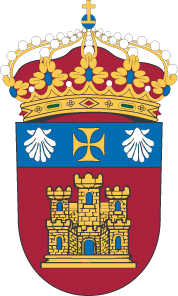Por favor, use este identificador para citar o enlazar este ítem: http://hdl.handle.net/10259/9741
Título
Estudio comparativo de soluciones constructivas para la rehabilitación de las fachadas de un edificio de uso docente desde el criterio de la eficiencia energética
Autor
Director
Fecha de lectura/defensa
2012-06-14
Abstract
Se plantea la rehabilitación energética de un edificio de uso docente centrándose en la mejora de sus fachadas. Para ello se estudiará mediante simulación la ejecución de tres soluciones constructivas desde el interior, la zona interna y el exterior de las mismas. Para realizar la modelización del edificio y su simulación energética se emplearán los programas informáticos LIDER y CALENER VYP.
Se evaluará la disminución de la demanda energética de calefacción y refrigeración, la disminución de emisiones de CO2 y el comportamiento de los puentes térmicos de fachada.
Dicho estudio se extenderá a tres de las doce zonas climáticas en las que el Código Técnico de la Edificación ha dividido a España, atendiendo a la severidad climática del invierno y del verano. Se elegirán las dos que tengan las condiciones climáticas más opuestas (E1 y A4) y una que presente una situación intermedia (C2).
Previamente, se habrán estudiado cuatro posibles orientaciones del edificio en cada zona, y a aquella que presente una menor demanda energética se le aplicarán las tres soluciones de rehabilitación energética para su comparación.
Las conclusiones que se obtengan, conducirán a una serie de recomendaciones para cada zona climática, relativas a la mejor orientación del edificio y a la solución constructiva más adecuada, para mejorar la eficiencia energética del mismo. We set out the energy renewal of an educational-use building, focusing on the improvement of its façades. To that end, we will study three different constructive solutions, from the inside, from the inner zone and from the outside of the façade. In order to modelize the building and execute its energy simulation we will use the programmes LIDER and CALENER VYP.
A decrease in energy demand for heating and cooling, the reduction of CO2 emmisions, and the behaviour of the thermal bridge will be evaluated. This study will consider three of the twelve climate zones into which the Spanish regulation Codigo Técnico de la Edificación divides Spain, according to the harshness of winters and summers. We will choose the two zones with the most contrasting climate conditions (E1 and A4) and an intermediate one (C2).
From four previously studied orientations of the building in each climate zone, we will choose the one with the smaller energy demand, and apply to this the three energy renewal solutions in order to establish a comparison.
The resulting conclusions will lead to a series of recomendations for each of the climate zones, concerning the best possible orientation of the building and the most accurate constructive solution to improve its energy efficiency.
Materia
Termotecnia
Heat engineering
Ahorro de energía
Energy conservation
Edificios para la enseñanza
School buildings
Collections
Documento(s) sujeto(s) a una licencia Creative Commons Attribution-NonCommercial-NoDerivatives 4.0 Internacional











